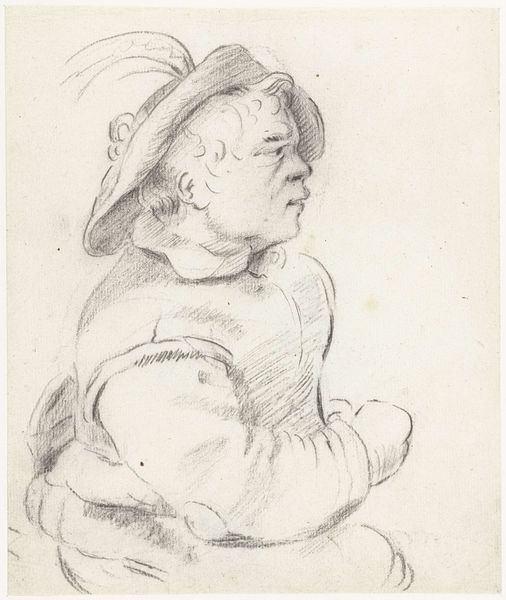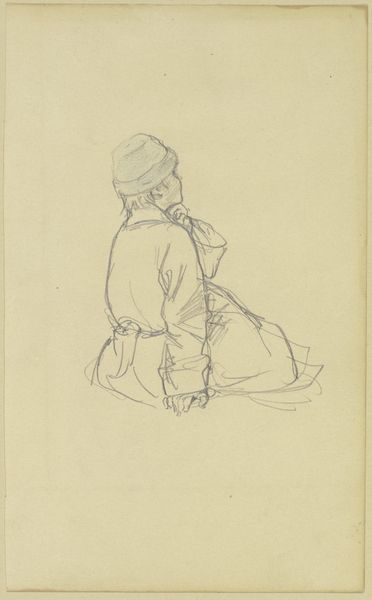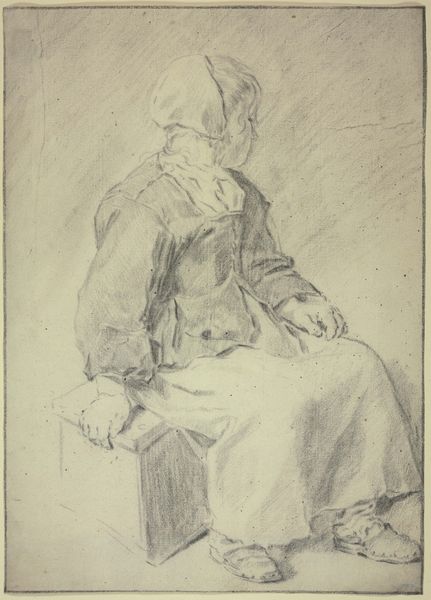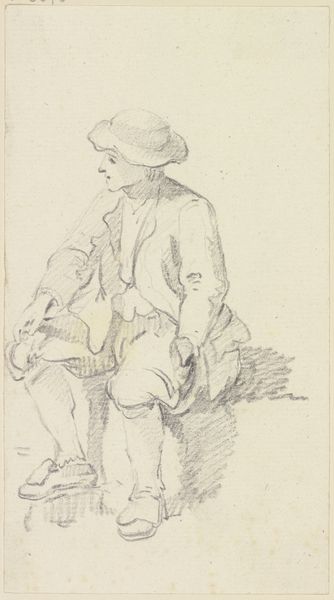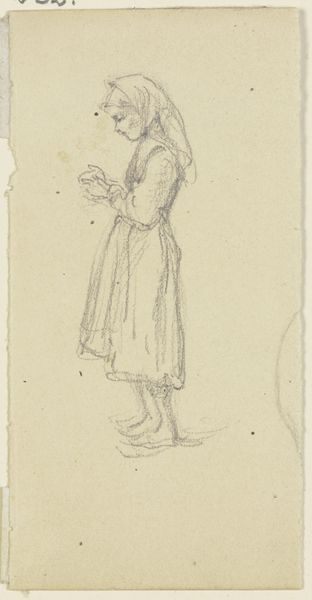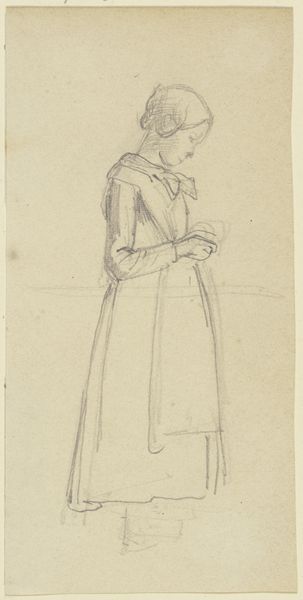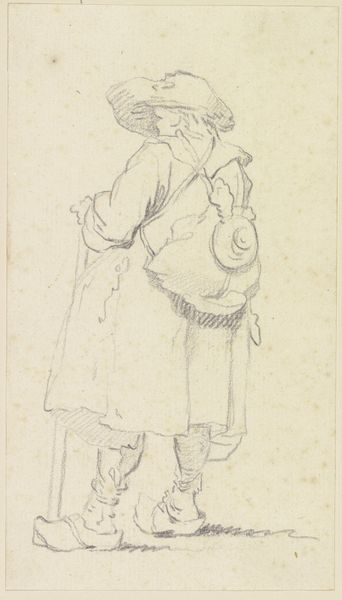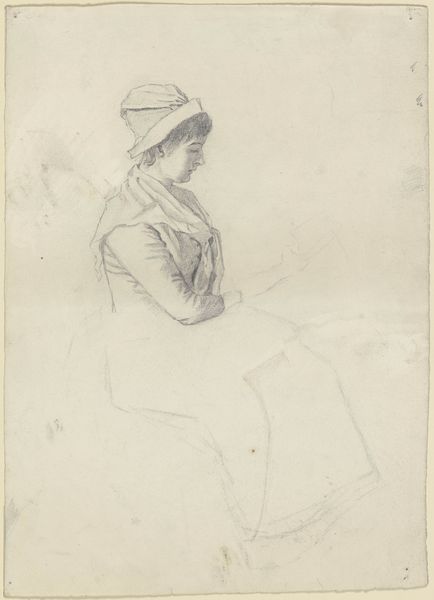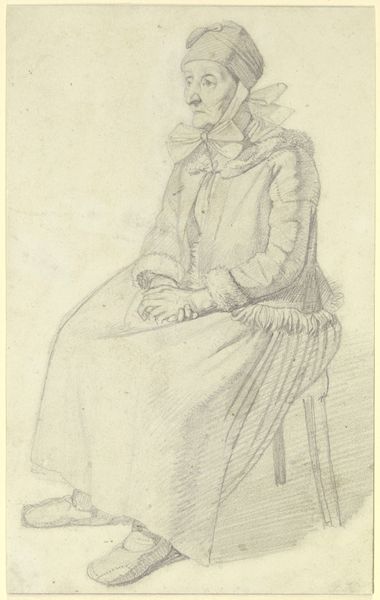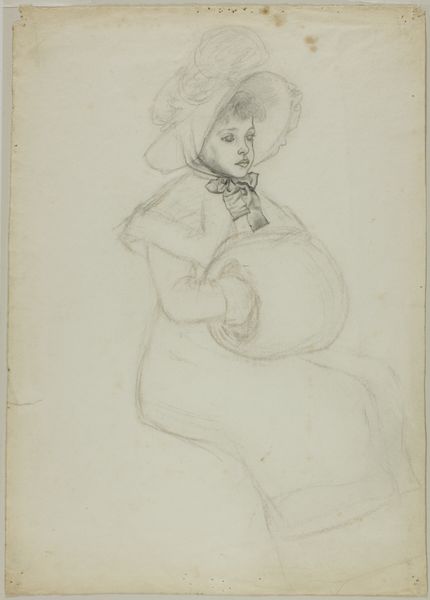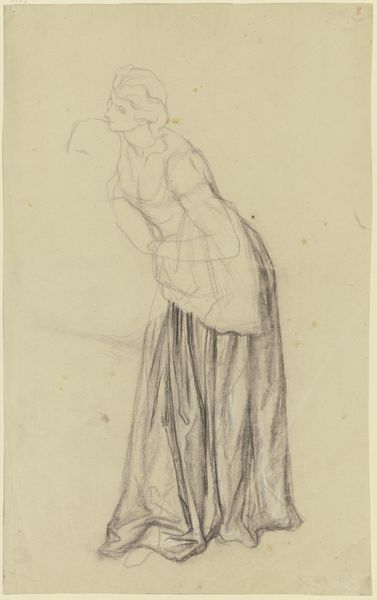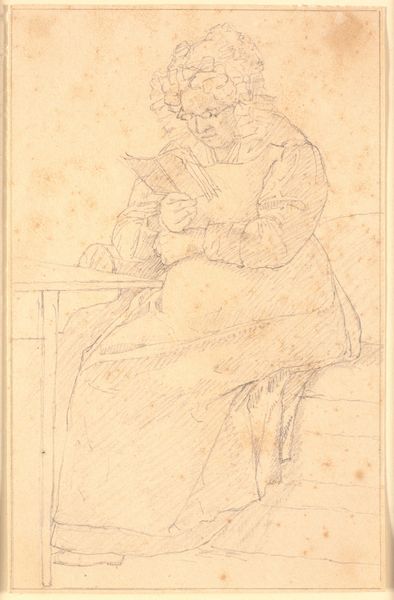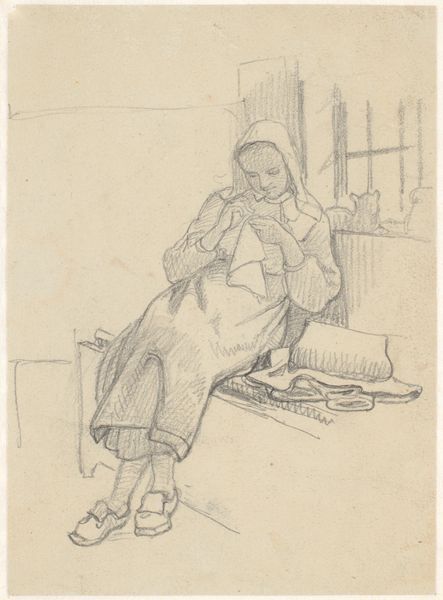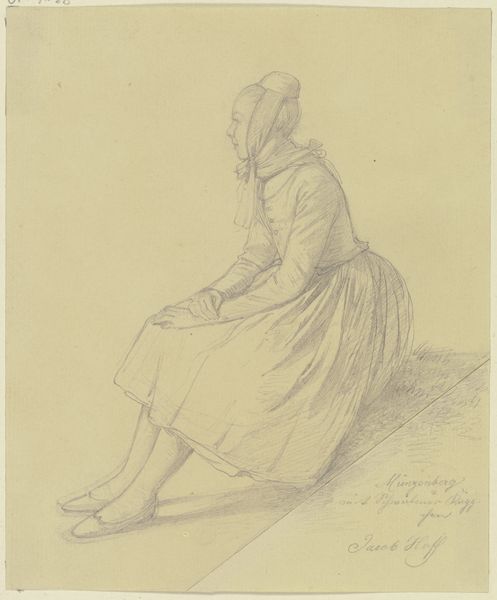
drawing, pencil
#
portrait
#
drawing
#
impressionism
#
pencil
#
portrait drawing
#
genre-painting
Copyright: Public Domain
Curator: The delicate lines give this drawing a wistful, fleeting quality. It’s a subtle portrait, full of a quiet pensiveness. Editor: That pensiveness could be tied to the material realities of textile production in 1888 when this drawing, "Strickendes Mädchen mit Hut," or "Knitting Girl with Hat," was created by Gustav Schraegle. Look at the specificity of the hands, captured in action, engaged in this form of labor. Curator: I find myself focusing on the contrast between the sketchiness of the clothing and background versus the sharper detail of the girl's face and the intricate details of her hat. There’s a hierarchy in the attention given to different parts of the composition. Editor: Exactly, and thinking about this hierarchy, it highlights the socio-economic implications of craft itself. Is knitting presented here as labor or leisure? This becomes an entry point into conversations around the division of labor and the societal expectations placed upon women. Curator: Her gaze is fixed downward, perhaps concentrating on the work, or perhaps signaling something else. The materiality of pencil on paper emphasizes the process, doesn't it? Schraegle's light touch gives the piece an immediate, almost improvisational feel. Editor: I see it as an intersectional view on how labor, skill, and identity were deeply intertwined for women of the time. Consider the politics of representation, how her class, her gender, influenced both her access to leisure, her assigned labor. Knitting provided women with one of the few pathways for autonomy and even economic power in a very constrained society. Curator: Interesting point. The work seems deceptively simple. The subject seems quite ordinary. Editor: Yes, ordinary in ways that reveal a larger political frame. Thinking about gender, labor, and the act of making can really challenge what we consider significant within art history itself. Curator: Indeed. Considering this lens, one observes not just a drawing but a layered discourse around creation. Editor: Precisely. It shifts from passive observation to a critical examination of women, craft, and power in the late 19th century.
Comments
No comments
Be the first to comment and join the conversation on the ultimate creative platform.
